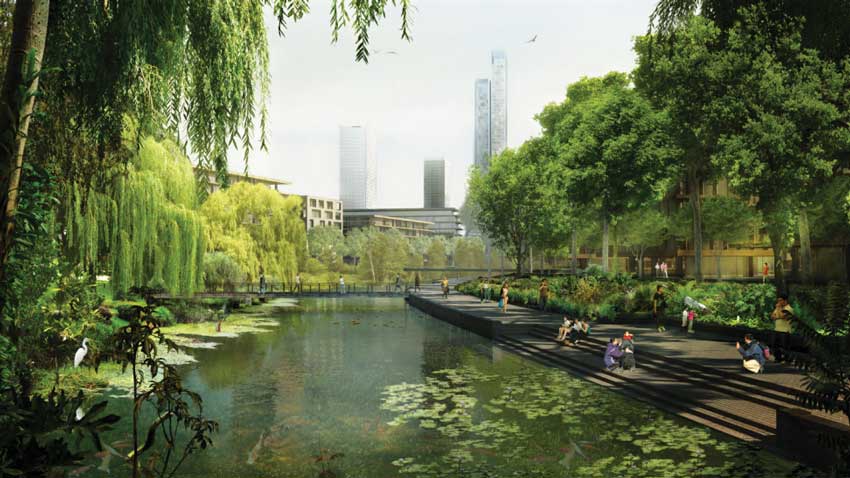
Skidmore, Owings & Merrill, Inc (SOM) has been awarded, by Blenheim Properties, the commission for the master plan for Green Tech City in Hanoi, Vietnam.
SOM's master plan incorporates advanced city design methods and sustainable principles to reduce the demand for non-renewable resources and typical civil infrastructure. Covering an area of 145 hectares, the plan integrates two existing villages with future development and provides necessary community amenities to serve a future urban population in excess of 20,000 people. The Master Plan expands and reinforces the local traditions and green urban character of Hanoi. The plan also engages and enlivens the strategic green landscape corridor envisioned at the city scale along the adjoining river and applies state-of-the-art technology in carbon emissions reduction, energy needs reduction and smart infrastructure.
In addition to a new linear riverfront park, the Master Plan generates a series of organic, low-rise, pedestrian-friendly residential neighborhoods within the planned 'Green Corridor'. This is balanced by a more urban and dense edge of highrise development articulating the future skyline of the district. A complete urban living environment will emerge on site, including a variety of housing types integrated with schools, healthcare clinics, sports and other public facilities. One of the key architectural features at the heart of the plan is a new Cultural Forum building animating a civic piazza, establishing an iconic meeting space for this new community and the wider population of Hanoi. This building is designed to accommodate a range of uses including an auditorium, TV studio, art gallery, mediateque, and cafés.
The fragmented system of existing agricultural water channels on site is reorganized into an interconnected network of landscaped waterways. These will provide continuous bands of public green space defining intimate outdoor spaces for each neighborhood. This water system assists in managing flood control, preventing rainwater runoff into surrounding areas, filtering and cleansing grey water and providing a source for irrigating new viticulture activities. New public spaces also protect and encourage new native wildlife habitats to form. In addition to the new city riverfront park, these spaces include a linear canal park, a lake-front district, public gardens, children's play areas, sports and recreation fields, a wetland centre and nature walks.
The plan was informed by a rigorous process designed to optimize its environmental sustainability. Wind and solar analyses were used to determine the optimal orientation of streets and buildings in order to create comfortable urban micro-climates. These ensure the plan will harness natural environmental conditions in order to maximize comfort and minimize infrastructure requirements as well as operational energy costs. Sustainable district-wide technologies like canal water cooling, tri-generation plants, waste recycling and rainwater harvesting are integral components of the plan. While contemporary building technology is championed, the plan also promotes low-tech passive design strategies for environmental-friendly architecture that is appropriate for the local economy and Vietnamese climate and culture.















